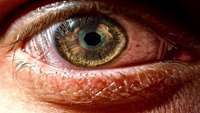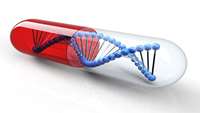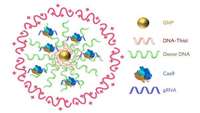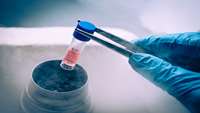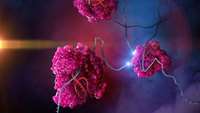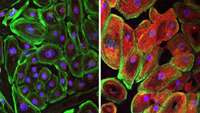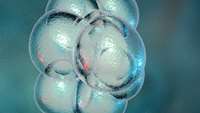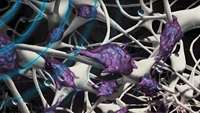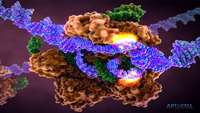FDA panel unanimously votes to approve gene therapy for blindness
Retinal dystrophy due to mutation of the RPE65 gene causes severe visual impairment beginning in infancy. As it progresses, patients experience gradual loss of peripheral vision and central vision. Eventually, the disease leads to blindness.
New microcapsules to enhance the efficiency of genome-editing
Researchers from Tomsk Polytechnic University jointly with their colleagues from St. Petersburg, Hamburg and London have found that polymer and hybrid silica-coated microcapsules are more efficient in genome-editing when applying CRISPR-Cas9. In the future, this joint development will significantly simplify and increase the efficiency of genome editing, which can treat previously irremediable inherited diseases such as Alzheimers, hemophilia and many others.
CRISPR Nanoparticles Repair Duchenne Muscular Dystrophy Gene
Scientists have developed a gold nanoparticle technology for delivering the CRISPR/Cas9 gene-editing system to cells that, when tested in the mdx mouse model of Duchenne muscular dystrophy (DMD), repaired the faulty DMD gene, leading to improved strength and agility and reduced fibrosis
TEDCO awards $1 million for stem cell projects
TEDCO, the Maryland Technology Development Corporation, awarded four recipients more than $1 million for stem cell research for validation and commercialization of products.
New CRISPR tool targets RNA in mammalian cells
Researchers from the Broad Institute of MIT and Harvard have shown that a CRISPR-based editing system can cut and bind RNA in mammalian cells. In a paper out this week in Nature, the team used CRISPR-Cas13, which the researchers had helped discover, to both reduce RNA levels and "tag" RNAs in order to view and track them within cells.
CRISPR-Cpf1 correction of muscular dystrophy mutations in human cardiomyocytes and mice
Duchenne muscular dystrophy (DMD), caused by mutations in the X-linked dystrophin gene (DMD), is characterized by fatal degeneration of striated muscles. Dilated cardiomyopathy is one of the most common lethal features of the disease.
Developing software for cell and gene therapy supply chain tracking
The first thing is, to always remember that were dealing with a living drug, cells, which are very sensitive to environmental conditions, such as temperature and humidity etc. All of those things can impact on the viability of the drug and its effectiveness. Controlling the conditions under which its collected, manufactured, shipped, received, defrosted and infused are critical to the success of therapy and this is a big challenge.
Patented invention has potential to induce and regulate stem cell differentiation
An invention by Florida Institute of Technology’s Shengyuan Yang was found to naturally narrow the spreading of stem cells and has the potential to induce and regulate their differentiation.
Tiny bubbles and a bit of gene therapy heal major bone fractures in pigs
It takes more than a cast and a little time to heal many broken bones. Whether it’s a soldier wounded in battle, a car accident victim, or an elderly person who has fallen, bone damage can be so extensive that the bones never heal properly, leaving people crippled or with other severe problems. Now, researchers have combined ultrasound, stem cells, and gene therapy to stimulate robust bone repair
CRISPR/Cas9 Disrupts Glaucoma Gene, Takes Pressure off Eyes in Disease Models
Scientists at the University of Iowa could be forgiven if they were to revise an old nursery rhyme to read, “two blind mice.” The scientists, led by Val Sheffield, M.D., Ph.D., used the CRISPR/Cas9 gene-editing system to disrupt a gene known to cause glaucoma.


